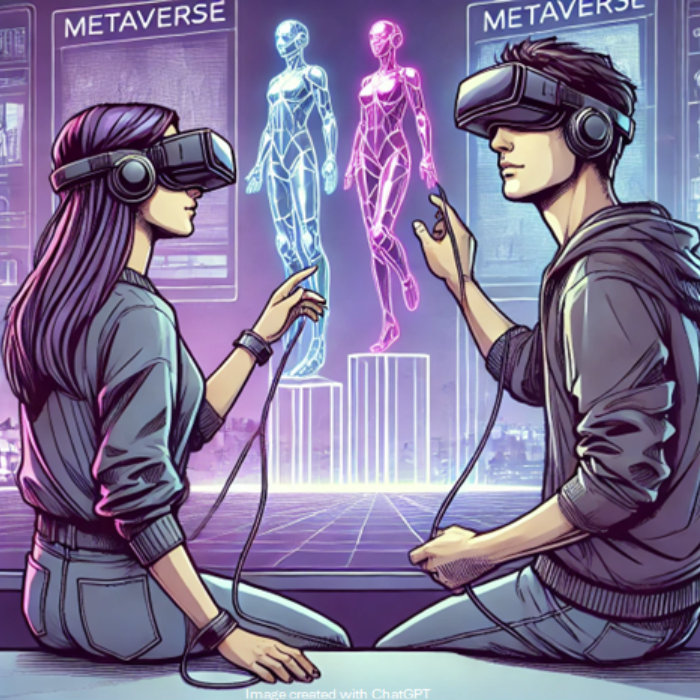Tackling Socio-Ethical Challenges and Seizing Opportunities of Business Hubs in the Metaverse
Researchers Involved
research areas
timeframe
2025 - 2025
contact
eleonora.vigano@ibme.uzh.chproject-files
This pilot project addresses a critical gap in metaverse research by focusing on the social and ethical dimensions of virtual reality business spaces, which have received limited attention in favor of economic analyses.
🎯 Research Goals
1. Better understanding the issues and difficulties that companies experience when implementing VR interactions through semi-structured interviews
2. Exploring the potential for larger funding schemes through collaboration between companies and academia within the Innosuisse framework
🔍 Key Findings
The Promise and the Reality
Virtual reality offers compelling advantages for businesses. Companies are using VR to showcase products to global clients, train employees in safe simulated environments, and enable collaborative work across geographical distances. The technology eliminates physical constraints, reduces travel costs, and provides more interactive experiences than traditional presentations. However, technical barriers remain significant: VR equipment is often uncomfortable, motion sickness affects many users, and the high costs limit adoption primarily to large corporations.
The Unruled Virtual World
The most pressing challenge we identified is what we call the unruled world phenomenon. Open VR spaces operate with no effective governance. Anonymity renders traditional social sanctions powerless—avatars cannot be traced back to real people, creating a dynamic similar to Plato’s ring of Gyges, where invisibility enables unethical behavior without social consequence.
A Troubling Asymmetry
Our research revealed a striking paradox in how VR experiences feel ‘real’. Negative experiences—verbal attacks—are felt as real by victims. Participants described sudden, visceral reactions: ‘sometimes we don’t get it how in the Metaverse, as an avatar, you can feel bothered by someone else. And then suddenly it was very real’.
Yet positive and neutral interactions fail to achieve the same depth of presence. Users consistently report difficulty being emotionally connected and note that VR ‘cannot substitute the value of face-to-face discussion and understanding and empathy’. This raises a fundamental question: Why does virtual harm feel real while virtual connection doesn’t?
Looking Forward
Despite these challenges, certain applications show promise, according to the interview subjects: employee training (particularly for dangerous scenarios), education as a complementary tool, and collaborative work across dispersed teams. Success will depend on technological improvements—more comfortable equipment, reduced motion sickness, better scalability—and critically, on developing effective governance frameworks.



